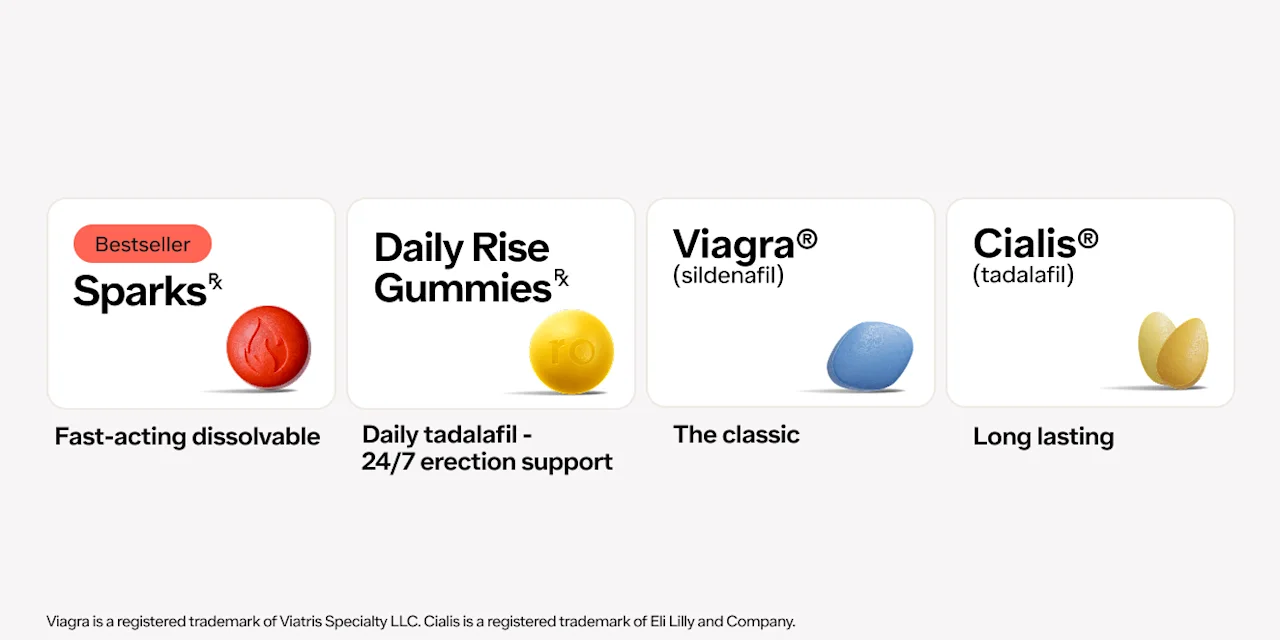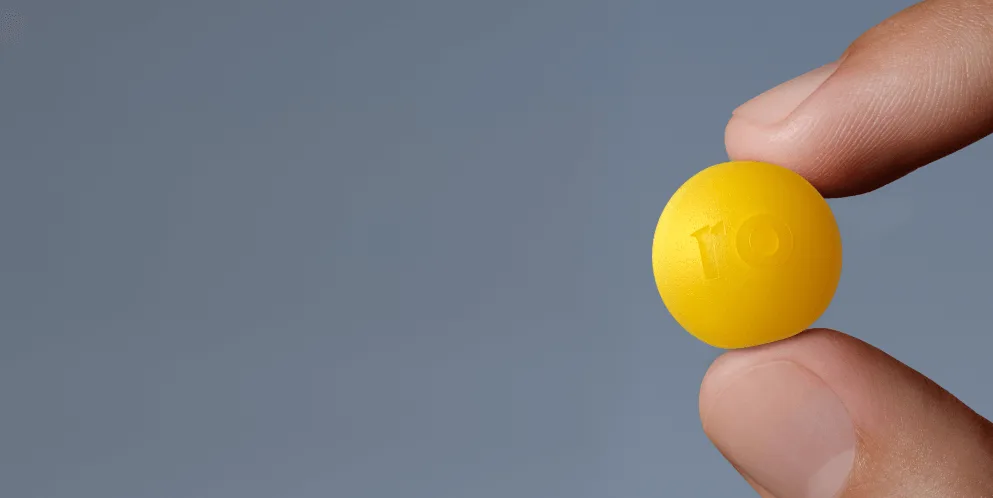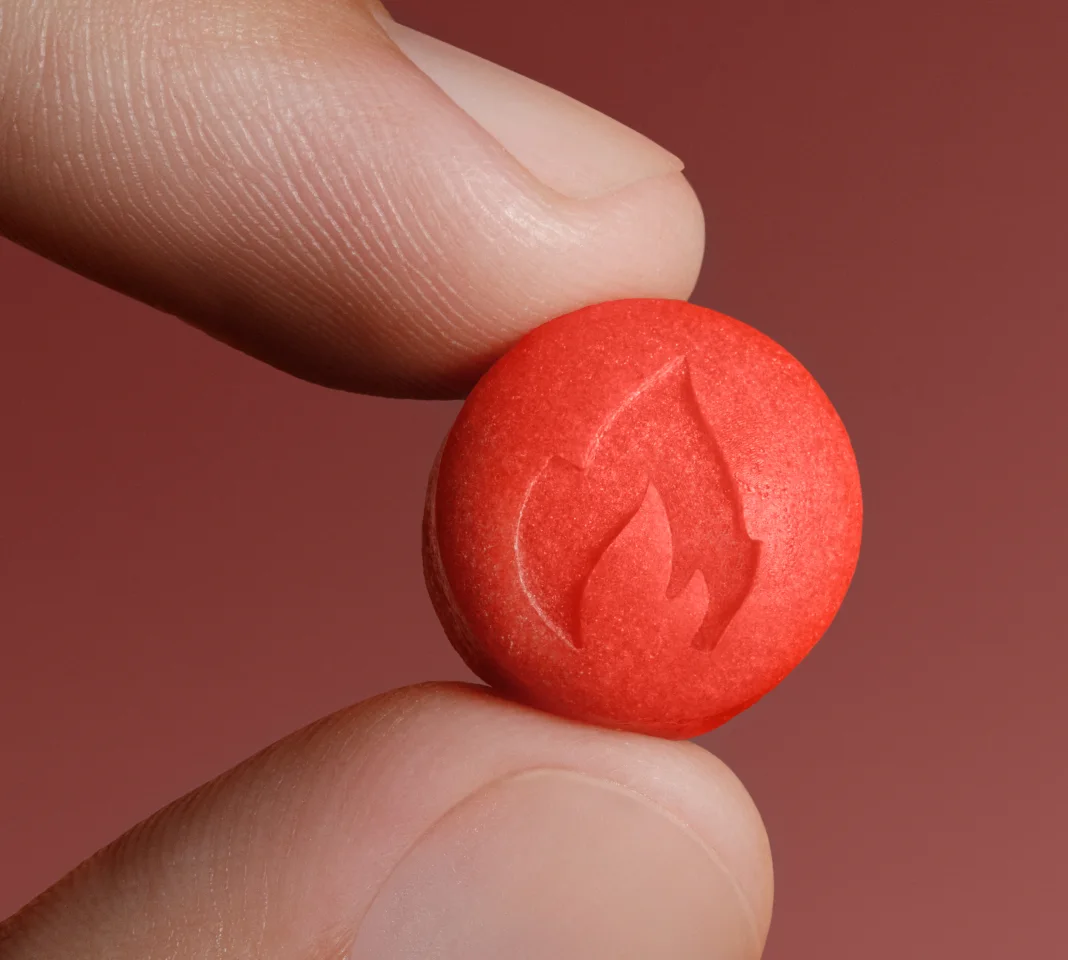Key takeaways
Red light therapy is being studied as a potential new way to treat erectile dysfunction (ED). The theory is that low-level red or near-infrared light may help boost blood flow and support tissue repair.
Research is still early. Animal studies look promising, but there’s not enough human data yet to know if it’s safe or effective.
Consult a healthcare provider before you try red light therapy for ED. A urologist can help you understand potential benefits and risks, or whether another treatment might be a better fit.
Prescription medications like Viagra and Cialis have decades of research behind them, are FDA-approved for the treatment of ED, and remain the most reliable options for improving erectile function in most people.
Here's what we'll cover
Here's what we'll cover
Here's what we'll cover
Key takeaways
Red light therapy is being studied as a potential new way to treat erectile dysfunction (ED). The theory is that low-level red or near-infrared light may help boost blood flow and support tissue repair.
Research is still early. Animal studies look promising, but there’s not enough human data yet to know if it’s safe or effective.
Consult a healthcare provider before you try red light therapy for ED. A urologist can help you understand potential benefits and risks, or whether another treatment might be a better fit.
Prescription medications like Viagra and Cialis have decades of research behind them, are FDA-approved for the treatment of ED, and remain the most reliable options for improving erectile function in most people.
Red light therapy for ED is an emerging, non-invasive treatment among people looking for natural ways to improve sexual health. The idea: Shine gentle red or near-infrared light on penile tissue to boost circulation and performance. But does the science actually back it up?
Some early research suggests it could work, but studies on red light therapy for erectile dysfunction (ED) are limited, so experts say it’s too early to call it a proven treatment.
Below, we’ll explain how red light therapy for erectile dysfunction may work, what the science says so far, how to use it safely, and what to consider before buying a red light therapy device for ED.
How does red light therapy for ED work?
Red light therapy for ED works by using low-level wavelengths of red or near-infrared light to stimulate blood flow and support cellular function in penile tissue. The light penetrates the skin and may influence how blood vessels, nerves, and cells — all of which play key roles in achieving and maintaining erections — behave .
Some early research suggests red light therapy may help with skin healing, muscle recovery, and reduced inflammation. The theory is that these same effects could potentially support erectile function, but evidence in humans is still limited. Because of this, red light therapy is considered experimental and shouldn’t replace proven ED treatments.
“Red light therapy shows potential for improving erectile dysfunction, especially in cases where nerve injury or impaired microcirculation play a large role,” says Ayesha Bryant, MD, an associate professor and associate director of clinical research at the University of Alabama at Birmingham.
Scientists are still figuring out exactly how red light therapy might help with erectile dysfunction, but several early theories are taking shape.
It may improve blood flow
One of the leading theories is that red light therapy helps get blood moving. When red or near-infrared light hits the skin, it can trigger the release of nitric oxide. Nitric oxide is a molecule that relaxes smooth muscle, opens up blood vessels, and improves cellular oxygenation, all of which are key to achieving and maintaining erections, says Justin Houman, MD, FACS, an assistant professor of urology at Cedars-Sinai Medical Center.
Animal studies back up this idea: Research in mice with age-related erectile dysfunction found that near-infrared light improved erectile function, promoted healthier penile tissue, and increased levels of nitric oxide–producing enzymes, compared with untreated mice. Another study in diabetic mice found that red and near-infrared light together improved erectile function and blood vessel growth while lowering oxidative stress.
Since impaired blood flow is one of the most common causes of erectile dysfunction, anything that helps with circulation could, in theory, help with erections. But these findings come from animal studies, not human trials, so more research is needed to know if the same effects occur in people, according to Dr. Bryant.
It may boost cellular energy
Red light therapy might also work on a more microscopic level by supporting how your cells make energy. The light has been shown to stimulate mitochondria, the energy centers inside your cells, to produce more ATP, a molecule that powers almost everything your body does.
In the penis, this could mean healthier mitochondrial function that may support healthier blood vessels and smoother muscle function, both essential for getting and maintaining an erection. In fact, animal studies have found that red light can help cells improve mitochondrial function, reduce oxidative stress, and repair damage caused by age-related and diabetes-related ED. However, because these studies were in mice, we don’t yet know if the same thing happens in people.
It may reduce inflammation and tissue damage
Inflammation and oxidative stress — basically, cellular wear and tear — can damage the delicate tissues and blood vessels involved in erections. Red light therapy may help reduce that inflammation and support tissue healing.
In the study of mice with diabetes-related erectile dysfunction, the treatment reduced oxidative stress and cell death while improving nerve and blood vessel health. The age-related erectile dysfunction study saw similar results: less scarring, healthier muscle tissue, and signs of reduced cellular aging.
These findings are promising, but it’s important to remember, “The evidence in humans remains very preliminary,” Dr. Bryant says. “Red light therapy should not replace established medical treatments such as PDE-5 inhibitors, hormone evaluation, or management of underlying cardiovascular or metabolic disease.”
All the studies we have are from animal and lab research, not human trials. Until scientists test red light therapy in people, we won’t know for sure if it delivers the same results.
Is red light therapy for ED safe?
Overall, red light therapy is considered safe when used correctly. But research on its safety for erectile dysfunction is limited.
Most of what we know about side effects comes from studies using red light therapy for other purposes, like skin healing or joint pain. The most common side effects are mild and temporary, such as:
Skin redness
Skin warmth
Irritation
Itching
Hyperpigmentation (especially in people with darker skin tones)
Before trying red light therapy for ED, talk with a healthcare provider (ideally a urologist). They’ll walk you through the potential benefits and risks based on your health and current treatments. If your concern is more related to potential skin changes, it may be helpful to consult with a dermatologist for further information.
How to use red light therapy for ED
Red light therapy for ED isn’t well studied in humans, so there’s no established standard for how to use it. Most of what we know comes from animal studies and early lab research.
The general idea is to expose the penis to low-level red (630–660 nanometers) or near-infrared (810-850 nanometers) light, according to Dr. Bryant. These wavelengths reach a few millimeters below the skin, where they may affect blood vessels and tissue health. In animal studies, treatments lasted up to 30 minutes per session, with up to 10 sessions over two weeks.
How to choose a red light therapy device for ED
Not all red light devices are created equal. If you’re considering trying one, it’s worth doing your homework, especially since settings, power, and safety standards can vary widely. Here’s what to look for, according to Drs. Houman and Bryant:
Dual wavelengths: Choose a device that emits both red and near-infrared light. Red light works on surface tissues, while near-infrared light penetrates deeper layers. Together, they may penetrate penile tissue deeply enough to stimulate nitric oxide production and blood flow, Dr. Houman says.
Medical-grade power density: The light intensity of most over-the-counter devices isn’t strong enough to reach erectile tissue, Dr. Houman says. He recommends choosing a product with a light intensity of 50–100 mW/cm² at the surface.
Safety: Stick with devices that have medical or therapeutic LED certification and include guidance for eye protection, proper positioning, and safe exposure times. “The device should have built-in thermal regulation to prevent overheating or skin burns,” Dr. Houman adds.
Usability: Any potential benefits from light therapy are likely cumulative, not instant, according to Dr. Bryant. Choose a device that’s practical and comfortable to use a few times per week, rather than one that feels complicated or unrealistic to maintain.
Finally, Dr. Bryant emphasizes that anyone experiencing ED should first get a medical evaluation. “It’s important to rule out reversible causes like vascular disease, diabetes, low testosterone, medication side effects, or psychological factors before relying on a device-based therapy alone,” she says.
How to apply red light therapy for ED
If you try red light therapy, always follow the instructions from your device insert and your healthcare provider. Different products use different light intensities and exposure times, so it’s important to stick to their guidance rather than guess or overdo it.
Used safely and consistently, these general steps can help:
Protect your eyes: Wear the goggles provided, because direct light exposure can irritate your eyes.
Start short: There’s no need to overdo it — studies typically use red light therapy for about 12 to 30 minutes per session (though this research was done in animals or for other health conditions, not in people with ED).
Maintain proper distance: While the ideal positioning varies by product, it’s generally recommended to keep the device at least 20 to 30 centimeters (at least 8 inches) away from your skin.
Use a steady routine: Consistency seems to matter. In animal studies, mice received the treatment for up to 10 days in a two-week period. That said, there’s no human research on ED specifically, so don’t use it daily unless advised by a clinician.
Alternative to red light therapy for ED
Red light therapy may show promise, but it’s still experimental.
“In my practice, I sometimes consider red light therapy as an adjunctive tool, not a first-line treatment, especially for men seeking a natural, drug-free approach or those already on a multimodal ED optimization plan,” Dr. Houman says.
Fortunately, there are well-studied ED treatments that are known to be safe and effective. Common options include:
Prescription medications: PDE5 inhibitors (phosphodiesterase type-5 inhibitors) like Viagra (sildenafil) and Cialis (tadalafil) are the most common and reliable options in most people. They relax blood vessels to improve blood flow, making it easier to get and maintain an erection. These medications are approved by the United States Food and Drug Administration (FDA) for the treatment of erectile dysfunction.
Healthy habits: What’s good for your heart is good for your erections. Regular exercise, a nutritious diet, and maintaining a healthy weight can improve circulation and support sexual health.
Addressing underlying causes: ED can stem from stress, anxiety, relationship strain, or hormone imbalances. Therapy, stress management, or checking testosterone levels can help uncover and treat the root cause.
Other medical devices and treatments: Noninvasive options like vacuum erection devices (penis pumps) or constriction rings can help draw blood into the penis and keep it there while the device is in use. For people who don’t respond to medication, their healthcare provider may also recommend exploring penile injections, shockwave therapy, or implants.
Bottom line
Red light therapy for your penis may sound intriguing, but it’s still in the early research stage. While the treatment appears low-risk and may one day offer another option for improving blood flow and tissue health, there’s no human evidence yet showing it works for erectile dysfunction.
The science is early: Studies in animals suggest red light therapy may boost circulation, reduce inflammation, and improve tissue health, but human trials haven’t confirmed these effects.
It’s not FDA-approved for ED: No red light therapy device has been cleared or approved by the FDA for treating erectile dysfunction specifically.
Safety appears low-risk, but unproven: Mild skin irritation or redness are the most common side effects in light therapy research, but penile tissue hasn’t been studied directly.
Evidence-backed treatments still lead the way: PDE5 inhibitors remain the safest and most effective first-line options for most men.
Lifestyle changes are important: Exercise, a balanced diet, stress management, and addressing underlying conditions like high blood pressure or diabetes all support erectile function.
DISCLAIMER
If you have any medical questions or concerns, please talk to your healthcare provider. The articles on Health Guide are underpinned by peer-reviewed research and information drawn from medical societies and governmental agencies. However, they are not a substitute for professional medical advice, diagnosis, or treatment.
Viagra Important Safety Information: Read more about serious warnings and safety info.
Cialis Important Safety Information: Read more about serious warnings and safety info.
References
American Academy of Dermatology. (2024). Is red light therapy right for your skin? Retrieved from https://www.aad.org/public/cosmetic/safety/red-light-therapy
Anita, L., Choi, M. J., Yin, G. N., et al. (2025). Photobiomodulation therapy for diabetic erectile dysfunction targeting neuroinflammation and neurovascular regeneration. Scientific Reports, 15(1), 20513. doi:10.1038/s41598-025-04873-w. Retrieved from https://www.nature.com/articles/s41598-025-04873-w
Couturaud, V., Le Fur, M., Pelletier, M., & Granotier, F. (2023). Reverse skin aging signs by red light photobiomodulation. Skin Research And Technology: Official Journal Of International Society For Bioengineering And The Skin (Isbs) [And] International Society For Digital Imaging Of Skin (Isdis) [And] International Society For Skin Imaging (Issi), 29(7), e13391. doi:10.1111/srt.13391. Retrieved from https://pubmed.ncbi.nlm.nih.gov/37522497/
Dompe, C., Moncrieff, L., Matys, J., et al. (2020). Photobiomodulation-underlying mechanism and clinical applications. Journal of Clinical Medicine, 9(6), 1724. doi:10.3390/jcm9061724. Retrieved from https://pmc.ncbi.nlm.nih.gov/articles/PMC7356229/
Giménez, M. C., Luxwolda, M., Van Stipriaan, E. G., et al. (2022). Effects of near-infrared light on well-being and health in human subjects with mild sleep-related complaints: a double-blind, randomized, placebo-controlled study. Biology, 12(1), 60. doi:10.3390/biology12010060. Retrieved from https://pmc.ncbi.nlm.nih.gov/articles/PMC9855677/
Glass G. E. (2021). Photobiomodulation: The clinical applications of low-level light therapy. Aesthetic Surgery Journal, 41(6), 723–738. doi:10.1093/asj/sjab025. Retrieved from https://pubmed.ncbi.nlm.nih.gov/33471046/
Kaltsas, A., Zikopoulos, A., Dimitriadis, F., et al. (2024). Oxidative stress and erectile dysfunction: pathophysiology, impacts, and potential treatments. Current Issues in Molecular Biology, 46(8), 8807–8834. doi:10.3390/cimb46080521. Retrieved from https://pmc.ncbi.nlm.nih.gov/articles/PMC11353036/
Leslie SW, Sooriyamoorthy T. (2024). Erectile dysfunction. StatPearls. Retrieved from https://www.ncbi.nlm.nih.gov/books/NBK562253/
Ngoc, L. T. N., Moon, J. Y., & Lee, Y. C. (2023). Utilization of light-emitting diodes for skin therapy: Systematic review and meta-analysis. Photodermatology, Photoimmunology & Photomedicine, 39(4), 303–317. doi:10.1111/phpp.12841. Retrieved from https://pubmed.ncbi.nlm.nih.gov/36310510/
Padoin, S., Zeffa, A. C., Molina Corrêa, J. C., et al. (2022). Phototherapy improves muscle recovery and does not impair repeated bout effect in plyometric exercise. Journal of Strength and Conditioning Research, 36(12), 3301–3310. doi:10.1519/JSC.0000000000003895. Retrieved from https://pubmed.ncbi.nlm.nih.gov/33273302/
Zheng, Z. J., Chen, Y., Chen, Q. X., et al. (2025). Near-infrared photobiomodulation therapy for age-related erectile dysfunction: molecular and physiological restoration in a mouse model. Asian Journal of Andrology, 10.4103/aja202532. Advance online publication. doi:10.4103/aja202532. Retrieved from https://pubmed.ncbi.nlm.nih.gov/40727954/













